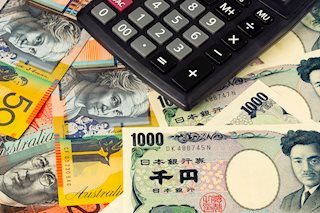AUD/JPY rebounds after the post-BoJ slump to the lowest level since April 19
|
- A combination of factors drags AUD/JPY to a multi-month low on Wednesday.
- The mixed Australian macro data and dismal Chinese PMIs weigh on the Aussie.
- The JPY gets a strong boost after the BoJ’s 15 bps rate hike and hawkish outlook.
The AUD/JPY cross plummets to its lowest level since April 19 after the Bank of Japan (BoJ) announced its policy decision on Wednesday, validating the Asian session breakdown through the 200-day Simple Moving Average (SMA). Spot prices, however, managed to rebound over 100 pips in the last hour, albeit lack follow-through and remain below the 100.00 psychological mark.
The Japanese Yen (JPY) strengthens across the board following the BoJ's surprise 15 basis points (bps) rate hike at the end of a two-day policy meeting on Wednesday. The Australian Dollar (AUD), on the other hand, is undermined by the mixed domestic data and contributed to the AUD/JPY pair's sharp intraday downfall. In fact, the Australian Bureau of Statistics (ABS) reported that the headline Consumer Price Index (CPI) rose 1.0% in the second quarter of 2024 and the yearly rate accelerated to 3.8%, both matching consensus estimates.
That said, the Reserve Bank of Australia's (RBA) Trimmed Mean CPI came in at 0.8% and 3.9% on a quarterly and annual basis, respectively, missing market expectations. Nevertheless, the readings forced investors to scale back bets for further interest rate hikes by the RBA, which, along with rather unimpressive Chinese macro data, weighed heavily on the Australian Dollar (AUD). Other data published on Wednesday showed that Australia’s Retail Sales increased by 0.5% MoM in June as compared to the 0.6% rise in May and 0.2% expected.
Meanwhile, China’s official Manufacturing PMI remained in contraction territory for the third straight month and edged a tad lower from 49.5 to 49.4 in July. Furthermore, the National Bureau of Statistics (NBS) Non-Manufacturing PMI declined from 50.5 in June to 50.2, as expected. The data does little to ease concerns about a slowdown in the world's second-largest economy or provide any impetus to the China-proxy Aussie. That said, the emergence of some selling around the Japanese Yen (JPY) helps limit any further downside for the AUD/JPY cross.
The BoJ's hawkish outlook, however, favors the JPY bulls and suggests that the path of least resistance for spot prices remains to the downside. In its monetary policy statement, the Japanese central bank noted that the underlying inflation is expected to increase gradually and that the economy is recovering moderately. The BoJ added that if the outlook for economic activity and prices is realised, it will continue to raise policy rates and adjust the degree of monetary accommodation accordingly. This warrants caution before confirming a bottom for the AUD/JPY cross.
Bank of Japan FAQs
The Bank of Japan (BoJ) is the Japanese central bank, which sets monetary policy in the country. Its mandate is to issue banknotes and carry out currency and monetary control to ensure price stability, which means an inflation target of around 2%.
The Bank of Japan has embarked in an ultra-loose monetary policy since 2013 in order to stimulate the economy and fuel inflation amid a low-inflationary environment. The bank’s policy is based on Quantitative and Qualitative Easing (QQE), or printing notes to buy assets such as government or corporate bonds to provide liquidity. In 2016, the bank doubled down on its strategy and further loosened policy by first introducing negative interest rates and then directly controlling the yield of its 10-year government bonds.
The Bank’s massive stimulus has caused the Yen to depreciate against its main currency peers. This process has exacerbated more recently due to an increasing policy divergence between the Bank of Japan and other main central banks, which have opted to increase interest rates sharply to fight decades-high levels of inflation. The BoJ’s policy of holding down rates has led to a widening differential with other currencies, dragging down the value of the Yen.
A weaker Yen and the spike in global energy prices have led to an increase in Japanese inflation, which has exceeded the BoJ’s 2% target. With wage inflation becoming a cause of concern, the BoJ looks to move away from ultra loose policy, while trying to avoid slowing the activity too much.
Information on these pages contains forward-looking statements that involve risks and uncertainties. Markets and instruments profiled on this page are for informational purposes only and should not in any way come across as a recommendation to buy or sell in these assets. You should do your own thorough research before making any investment decisions. FXStreet does not in any way guarantee that this information is free from mistakes, errors, or material misstatements. It also does not guarantee that this information is of a timely nature. Investing in Open Markets involves a great deal of risk, including the loss of all or a portion of your investment, as well as emotional distress. All risks, losses and costs associated with investing, including total loss of principal, are your responsibility. The views and opinions expressed in this article are those of the authors and do not necessarily reflect the official policy or position of FXStreet nor its advertisers.